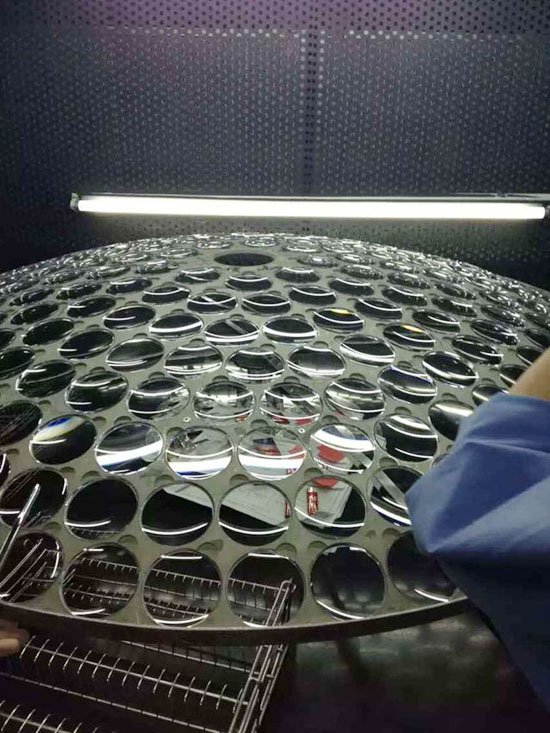
Optical coating refers to the process of coating a layer (or multiple layers) of metal (or medium) film on the surface of optical parts. The purpose of coating on the surface of optical parts is to reduce or increase the requirements of light reflection, beam splitting, color separation, filter, polarization and so on. Common coating methods include vacuum coating (a kind of physical coating) and chemical coating
Introduction of Optical coating
Coating is to coat a transparent electrolyte film or a metal film on the material surface by physical or chemical methods, in order to change the reflection and transmission characteristics of the material surface.
In the visible and infrared bands, the reflectivity of most metals can reach 78% ~ 98%, but not higher than 98%. Whether for CO2 laser, copper, molybdenum, silicon and germanium are used to make the mirror, germanium, gallium arsenide and zinc selenide are used as the output window and transmission optical element materials, or for YAG laser, ordinary optical glass is used as the mirror, output mirror and transmission optical element materials, it can not meet the requirements of more than 99% of the total mirror. In different applications, the output mirror has different transmittance requirements, so the optical coating method must be used.
For the infrared band of CO2 laser lamp, the commonly used coating materials are yttrium fluoride, praseodymium fluoride, germanium, etc; For YAG laser lamp in near-infrared band or visible band, the commonly used coating materials are zinc sulfide, magnesium fluoride, titanium dioxide, zirconia, etc. In addition to the high reflection film and antireflection film, it can also be plated with special films that increase the reflection of a certain wavelength and the transmission of another wavelength, such as the light splitting film in the laser frequency doubling technology.
Basic principle of optical coating
Light interference is widely used in thin film optics. The common method of optical thin film technology is to coat thin film on glass substrate by vacuum sputtering. It is generally used to control the reflectivity and transmittance of the substrate to the incident beam to meet different needs. In order to eliminate the reflection loss on the surface of optical parts and improve the imaging quality, one or more layers of transparent dielectric film are coated, which is called antireflection film or antireflection film. With the development of laser technology, there are different requirements for the reflectivity and transmittance of the film, which promotes the development of multilayer high reflection film and broadband antireflection film. In order to meet the needs of various applications, polarization reflective film, color spectroscopic film, cold light film and interference filter are made of high reflective film. [2]
After coating on the surface of optical parts, light is reflected and transmitted many times on the film layer to form multi beam interference. Different intensity distributions can be obtained by controlling the refractive index and thickness of the film layer, which is the basic principle of interference coating.



